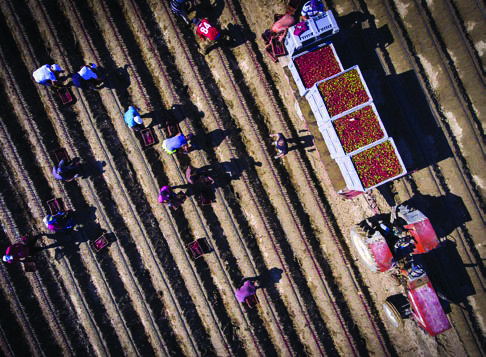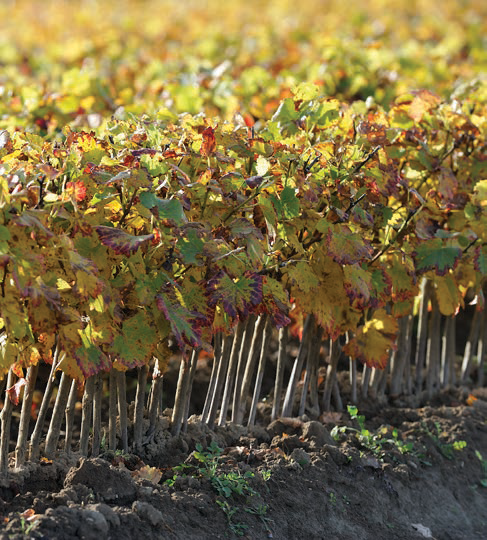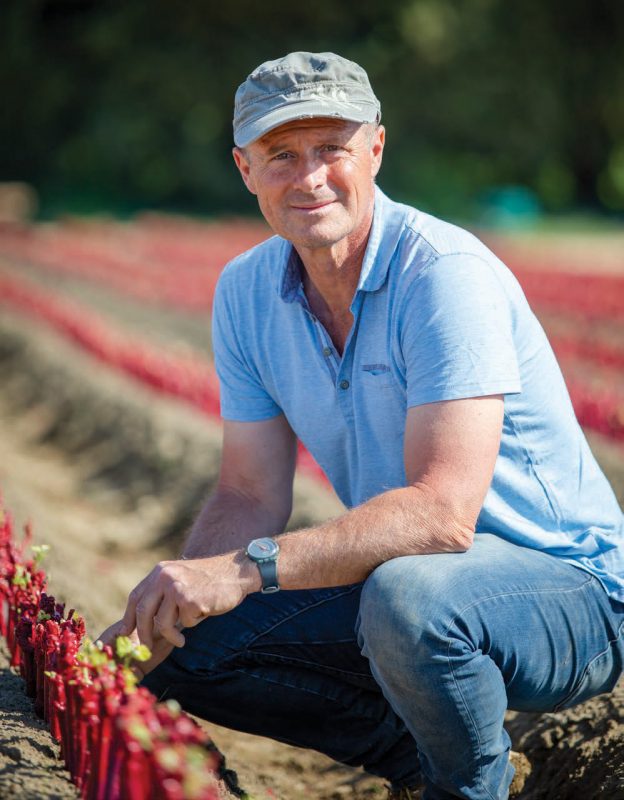This article originally appeared in the Spring 2022 print issue of Quench Magazine.
Lilian Bérillon is passionate, a man without compromise.
Early in his career he was distraught at the declining age of vineyards in France and elsewhere in Europe, noting that vines that used to have a life expectancy of 80 to 100 years now averaged 20 to 25 years. Bérillon’s observations led him to start his own nursery in the Southern Rhône more than fifteen years ago with the goal of preserving existing genetic plant material, selling healthy vines, and offering solutions to producers. Bérillon believes that by adopting best practices in the nursery and in the vineyard, vines will not only live longer, but they will be able to adapt to climate change.
So – what does Bérillon do differently than other nurseries? Many things, and every step is important. A visit to his nursery in Villeneuve is enlightening. First, all his 2.5 million vines are grafted by hand, and he favours the old-style whip grafting method over the machine omega grafting. Bérillon claims a better welding occurs between the rootstock (American rootstock) and the scion (vitis vinifera) with this technique.
Massal selection is also preferred over clonal selection. This method preserves genetic diversity by propagating a multitude of isolated individuals in multiple vineyards according to their characteristics, rather than focusing on clones which reduce diversity. However, while massal selection is allowed for the scion, it is not at this time permitted for rootstock selection. This is a mistake, he thinks. “Science has weakened many rootstocks which were not declining before. 161-49 Couderc favoured in Burgundy is an example,” Bérillon points out.
Diseases are another important reason why vines die earlier. Therefore, he sends his plant material to a laboratory for testing. PCR and ELISA tests are expensive, Bérillon claims, but necessary. On average, 2% of the vines are eliminated because they have diseases. Furthermore, to alleviate the growing problems of flavescence dorée, a phytoplasma disease threatening vineyards, he puts his plant material into hot water of 50 degrees Celsius for 45 minutes, thus killing the phytoplasma (bacteria). This is by no means a mandatory (or common) practice, but it is another tool he relies on to ensure he sells healthy plants to his clients.
Lilian Bérillon’s rigour is admirable and brave, but it comes with costly repercussions. While most nurseries keep and sell 78% of their grafted plants, Bérillon keeps on average 55%. “I reject any plants not well welded,” he says. “But this is not the case of every nursery.” Without a doubt this adds to the initial cost of the plants he sells, but in the long term a vine which lives longer has an economic benefit.
The other important part of the equation is soil management. Bérillon prescribes many key practices to his clients to ensure the vine thrives once planted. First, the land needs to rest between plantings. He compares this practice with a runner who needs to rest after a marathon before doing another one. “After 80 years of having vines planted on them, soils are tired, compacted and they have diseases,” he states. “You need to let the soil rest so it can heal. Afterwards when you replant, you have much better results.” Seven to eight years is prescribed between planting, but he realizes that this can be an economic challenge for many wine producers. For example, Jean-Marc Roulot in Burgundy waits three to four years and he has good results, Bérillon notes. At his own nursery, though, he lets the land rest for eight years.

Soil preparation is another important step towards success. After pulling out the vines, the remaining roots need to be removed. Otherwise, they provide food for nematodes which will continue to live and spread dis-eases. Bérillon also advises that the soil be worked in depth (50-60cm) with tools like ripper and chisel which protect the horizon while allowing the straight blade to aerate the soil. This prevents soil compaction and allows the roots of the rootstocks to go deep and establish themselves.
Bérillon deplores popular consultants who too often advise producers to work the soil in the surface (20-30cm). He also adds that during the resting period, the soil should always be planted with cover crops. This promotes microbial activities and biodiversity. Biodynamic preparations are advised during this resting period, something Bérillon practises at his nursery.
The timing of the planting is also key. He has done multiple experimentations comparing different planting periods and the differences between the results were staggering. For example, in the Rhône Valley, he recommends to producers he works with to plant in January or February. This allows the vine to grow roots during the wet period, and by the time the drier months of May and June arrive the roots have sufficient depth to have access to water and survive the drought period. Planting later, such as in the month of April is likely to lead to numerous plants dying.
Bérillon strongly believes that all of these techniques combined will allow vines to thrive despite the challenges associated with climate change.
“If a human is healthy, he is more likely to combat diseases and live longer. It is the same thing for a vine,” he shares. Many producers are trying to combat the repercussions associated with climate Lilian Bérillon
change by turning to cépages résistants, the newly developed hybrids. Those were created to combat mildew and drought.
But Bérillon is not sold on this method. Firstly, in the long term the vines are likely to lose their resistance to diseases, he explains. Secondly, the resulting wines made from those cépages résistants are not nearly as good as those made with Vitis vinifera. Rather, he encourages producers to adopt best practices which lead to healthy and strong vines. Further investigation is also needed to the already existing options. “Diversity is key,” he insists. “We already have an incredible genetic material available within Vitis vinifera. We need to explore this diversity further. And we need to do more research about rootstocks and study further the role mycorrhizae can play.”
Visiting Lilian Bérillon’s nursery is like opening the door to a world of possibilities and solutions. But it also raises an important and disturbing question: considering that everything starts in a nursery, why do so few people in the wine industry, including producers, know little to nothing about those important practices? One can only hope that those who subscribe to his work such as Jean-Louis Chave, Christine Vernay and Lalou Bize-Leroy will spread the word. The clock is ticking and if we want to save European genetic material, the urgency to act is now.

Bérillon Wine Nursery in September 
Lilian Bérillon
Michelle Bouffard is a sommelier, author, speaker, educator and consultant based in Montréal. Her first book
Dis-moi qui tu es, je te dirai quoi boire was published in 2017 and for the past six years, she has been the sommelier on the popular Quebec cooking show Curieux Bégin. In 2017, Michelle founded Tasting Climate Change, an international symposium to explore the challenges and solutions in the wine industry.


